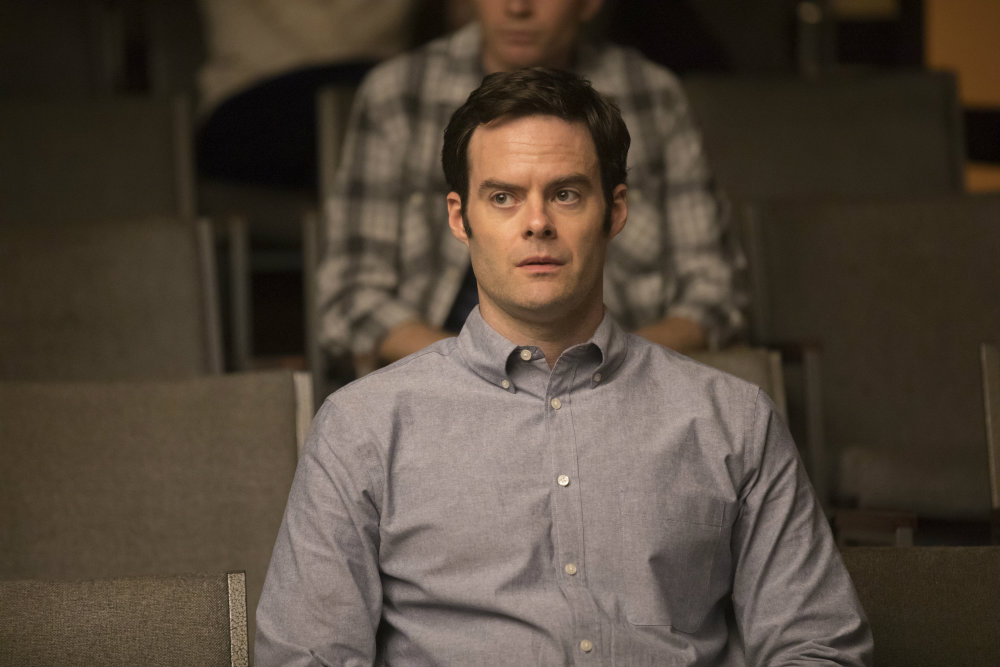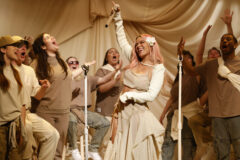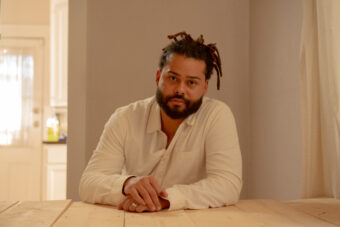Much like Barry Berkman, the hitman turned aspiring thespian he plays on TV, Bill Hader loved heavy music as a kid. Judging by the Metallica poster glimpsed above the title character’s bed in the first episode of the HBO dark comedy Barry, which Hader co-created and stars in, Berkman is still a regular headbanger. Hader not so much. When I talked him on the phone shortly after the series debut, he struggled for a good 30 seconds to find the word for the trademark hairstyle worn by the Misfits, one of his favorite bands from back in the day.
“It was the [shirt] with just skeleton Glenn Danzig singing and he has the hair. You, know the hair,” Hader said, adding extra emphasis on the word hair each time he repeats it. “That hair cut?”
The word he’s looking for is devilock, that greasy reverse ponytail lacquered down the front of the face, which bassist Jerry Only still rocks, despite the fact that he’s pushing 60. The Misfits even wrote a song about it.
“The devilock, yeah.” Hader was describing the Misfits t-shirt that got him sent home from his Tulsa, Oklahoma, school when he was a teen in the early ‘90s. Like Barry, his first allegiance was to metal. But he switched teams to punk rock after hearing Metallica cover two Misfits songs on their 1987 Garage Days Re-Revisited EP. He was die-hard for a while, but when it came to seeing Danzig and Only reunite for a recent run of shows, he took a hard pass.
“I got invited to [a show] in L.A. a couple months ago and I’m going to be totally honest, I was like, there’s going to be moshing and I’m afraid of being caught in a mosh pit,” Hader said. “It’s gonna get rowdy and I got three kids and I’m old and you know what? Watching them on YouTube is enough for me. I don’t have to deal with someone punching me in the face.”
We ended up on this tangent because of Barry’s Metallica poster. Hader’s character is an ex-marine with clinical depression who stumbles into an acting class while tailing a mark, leading him to decide he’d rather act for a living than kill people. When we meet Barry, he’s living in Ohio in an efficiency apartment that looks like a college dorm room. For Hader, the poster above his bed is supposed to signify that Barry is “stunted at a certain age, at the age of 15, and for me, that’s when I was listening to Metallica.”
But Alec Berg, the show’s co-creator, “still listens to Metallica and loves Metallica,” Hader said. “And he loves Slayer and metal in general. He’s a big fan of that. For me it was more of this character thing, and for Alec he was like ‘Oh yeah, and because Metallica is awesome.’”
When impersonating Berg, Hader’s voice drops into a mildly suggestive dirtbag drawl. He tends to slip in and out of impressions when quoting his coworkers, usually affecting a dumb but affectionate bro voice. It happens so smoothly that you wonder if he even knows he’s doing it.
Barry’s first season wrapped in May and racked up 13 Emmy nominations, including an outstanding actor nod for Hader. You’d think that carrying his own premium cable series would be overwhelming, but compared to the eight years he spent on Saturday Night Live, producing Barry was a day at the spa. On SNL, he established himself as a master impressionist and a reliable utility player with a knack for crafting absurd breakout characters, like debauched club kid Stefon. Hader was like his generation’s Phil Hartman, in that it was difficult to imagine SNL without him. But it didn’t come easily.
“Producing, writing, directing and starring in my own HBO show is less stressful than being a feature player on Saturday Night Live,” Hader said. “I’m not kidding.”
He has been open about his struggles managing anxiety during his SNL tenure, which started with an incident when he was playing Julian Assange in 2010. “I had a panic attack on air and while they were taking the makeup off me I was just kind of shaking and I was like ‘What happened out there? What’s going on?’ I was shaking and I couldn’t breathe and it was bad,” he said. Hader is far from the first SNL alum to make the production sound like a psychological minefield. But he takes an adamant “it’s not you, it’s me” approach toward his breakup with the show.
“To make it clear, I’m never saying the show is some terrible place…what the show demanded of you, and my personal mental makeup, just did not gel,” he explained. “There were the Maya Rudolphs, and Fred Armisens, and Kenan Thompsons, I’d be chatting with them and they’d go ‘Oh, wait, I gotta go do a sketch’ and then they’d go do a sketch, and they’d come right back and go ‘As I was saying’ and get right back into the conversation. Where for me, it was Friday afternoon until the show ended, I was just a nervous wreck. I couldn’t look anyone in the eye.”
Hader’s anxiety did not keep him from becoming one of SNL’s great impressionists and has sporadically returned to the show to impersonate short-lived White House communications director Anthony Scaramucci. A guest host appearance from March, which included one such Mooch portrayal, earned him an Emmy nod for outstanding guest actor in a comedy series. But when he’s asked if he ever misses the opportunity to lampoon other egregious Trump orbiters, the answer is an emphatic no. Before SNL, he says, he wasn’t even particularly aware of current events.
“The writers would always cast me as somebody and they would go ‘Hey, you’re gonna play Spitzer’ and I would go ‘Oh, cool. Who’s that?’ ‘He’s the governor of New York who just got in trouble’ ‘Oh, he is? I’ll go look at some tape.’”
He was better prepared for his recurring impersonation of Alan Alda, which popped up in a series of sketches involving horribly mismatched actors auditioning for the iconic roles in blockbusters like Top Gun and Jurassic Park. Hader came up with the bit while watching Alda’s portrayal of a smarmy television producer who serves as Woody Allen’s romantic rival in the 1989 film Crimes and Misdemeanors. In every one of Hader’s Alda impressions, he simulates the non-threatening dad attire—sweater over a button down, billowing, pleated khakis, and a severe ‘70s side part—that Alda wears in the film.
“He’s very excited to be there,” Hader says of Alda’s onscreen persona and of his own impression, which consists of the M.A.S.H. star and ‘70s sensitive man prototype constantly breaking character to express breathless wonder at the mundanities of film production, then dropping an uncharacteristic expletive. But what does Alda himself think of Hader’s channeling of his boundless curiosity and golden retriever-esque enthusiasm for the minutiae of filmmaking?
“I do know Bill Hader does an impression of me, and I’m flattered,” Alda said in an email from his rep when reached for comment. “And as for the accuracy of the impersonation, it’s uncanny. He sounds exactly like all the people who sound like me.”
Hader originally pitched his Alda impression as a standalone sketch, which was rejected. Then Colin Jost wrote it into the Back to the Future edition of the celebrity screentest sketch, with Alda auditioning as the troglodyte bully Biff Tannen.
https://youtube.com/watch?v=azwKHqEkXEY%3Fstart%3D30
This kind of thing happened all the time, and “it could be next week or it could a year or two later” before a rejected idea was suddenly resurrected, Hader said. It sounds like just the kind of thing that could make your anxiety flare up. For Hader, perhaps there’s some small satisfaction in lampooning the whims of his colleagues as effortlessly as he does actors and politicians. On the phone, he adopted a slow dopey voice, sort of a cross between stoner and petulant teen boy. “Hey,” he intoned, playing the role of an SNL writer, just as he’d inhabited his Barry co-creator earlier in our conversation. “I figured out where we can put Alan Alda!”





